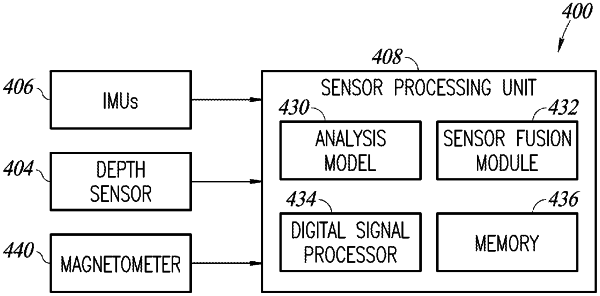| CPC G06V 40/166 (2022.01) [G01B 7/30 (2013.01); G01B 11/22 (2013.01); G01C 19/00 (2013.01); G01P 15/18 (2013.01); G01S 17/08 (2013.01); G01S 17/894 (2020.01); G06F 18/214 (2023.01); G06F 18/25 (2023.01); G06V 40/171 (2022.01)] | 16 Claims |

|
1. An electronic device, comprising:
a display;
a depth sensor configured to sense a distance between the display and objects in view of the depth sensor;
a first inertial measurement unit configured to detect an orientation of the electronic device; and
a sensor processing unit configured to receive depth sensor signals from the depth sensor, to receive inertial sensor signals from the first inertial measurement unit, and to detect a presence of a user based on the depth sensor signals and the inertial sensor signals, wherein the sensor processing unit includes:
a first neural network configured to receive the depth sensor signals and inertial sensor signals and to generate combined output data; and
an analysis model including a second neural network trained with a machine learning process to detect the presence of the user based on the combined output data.
|